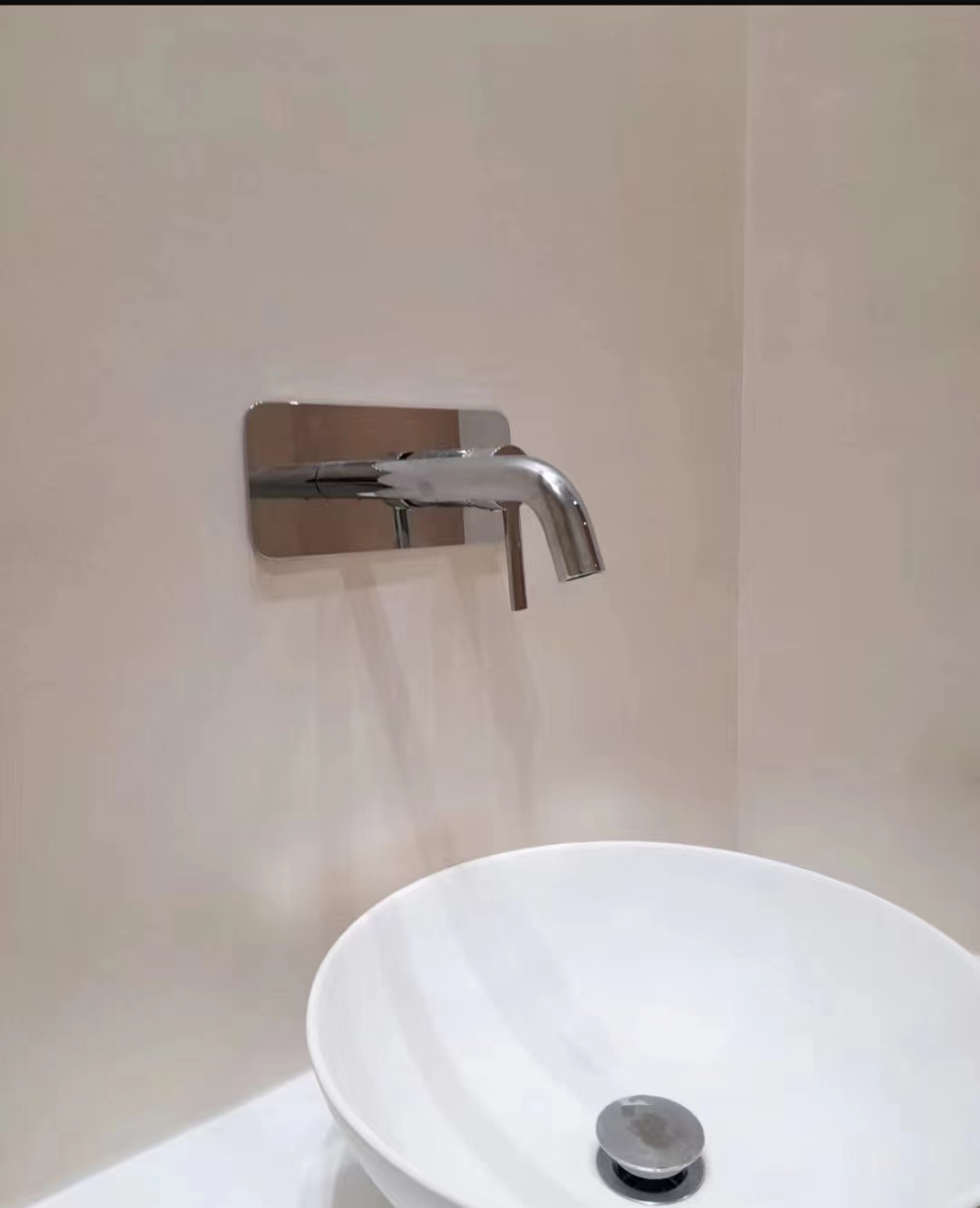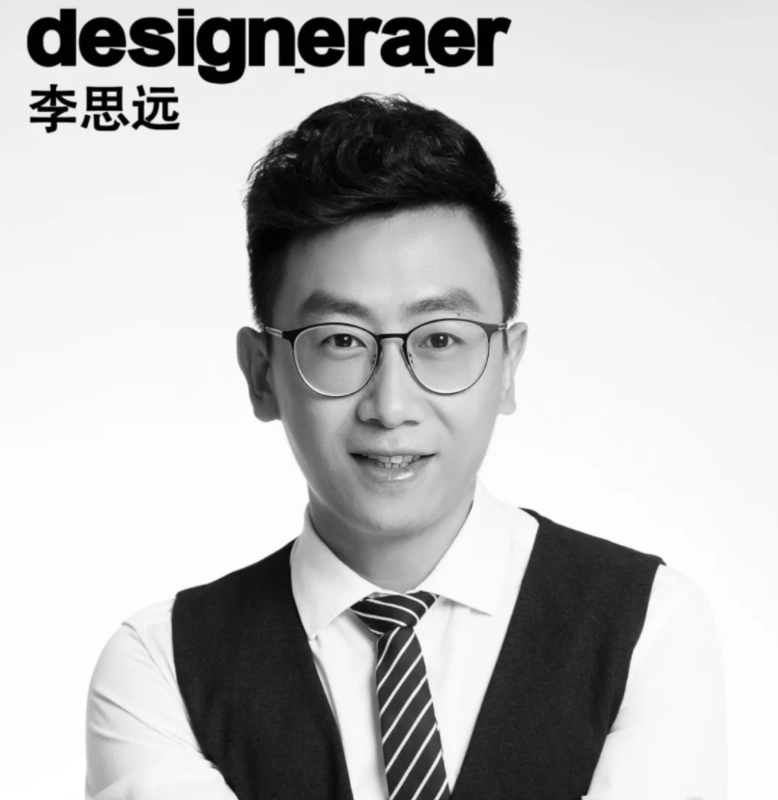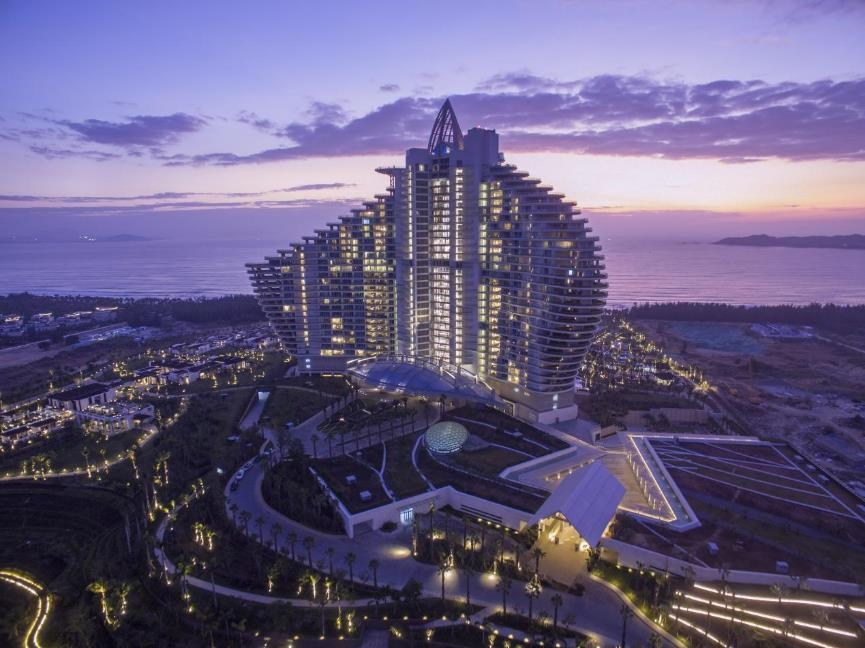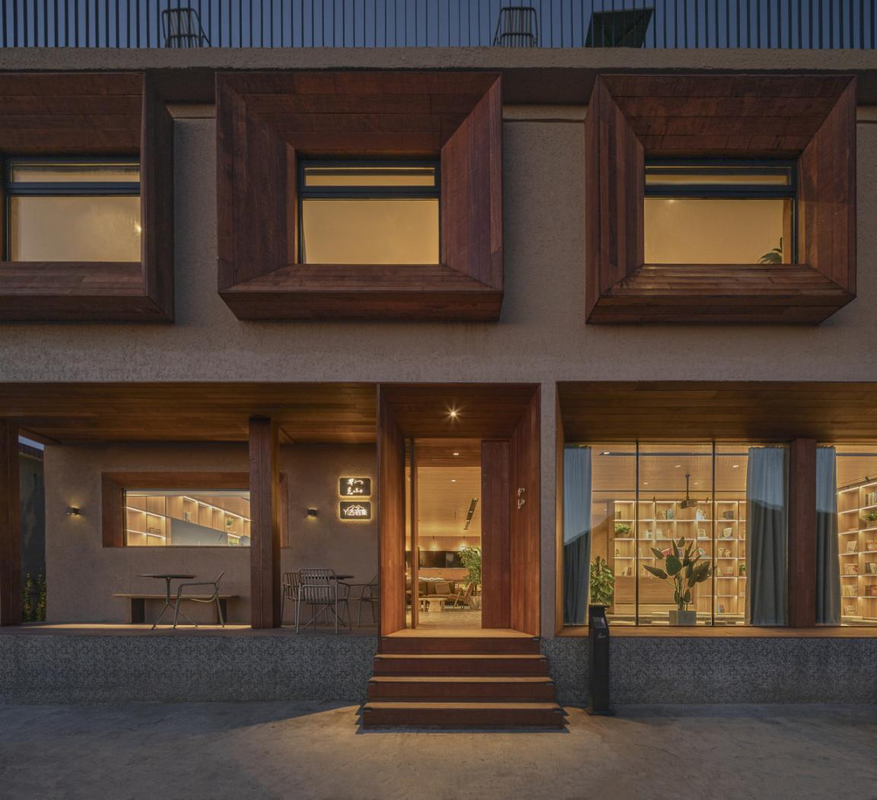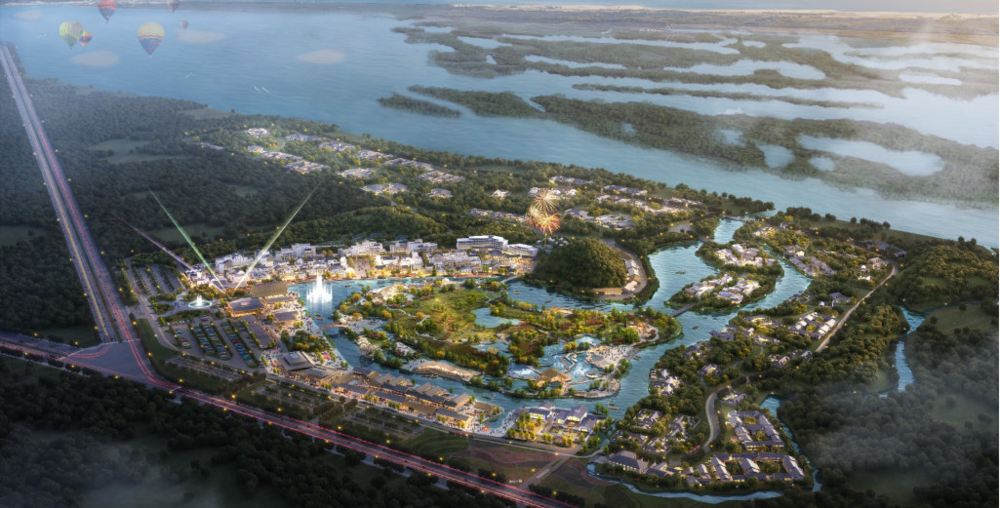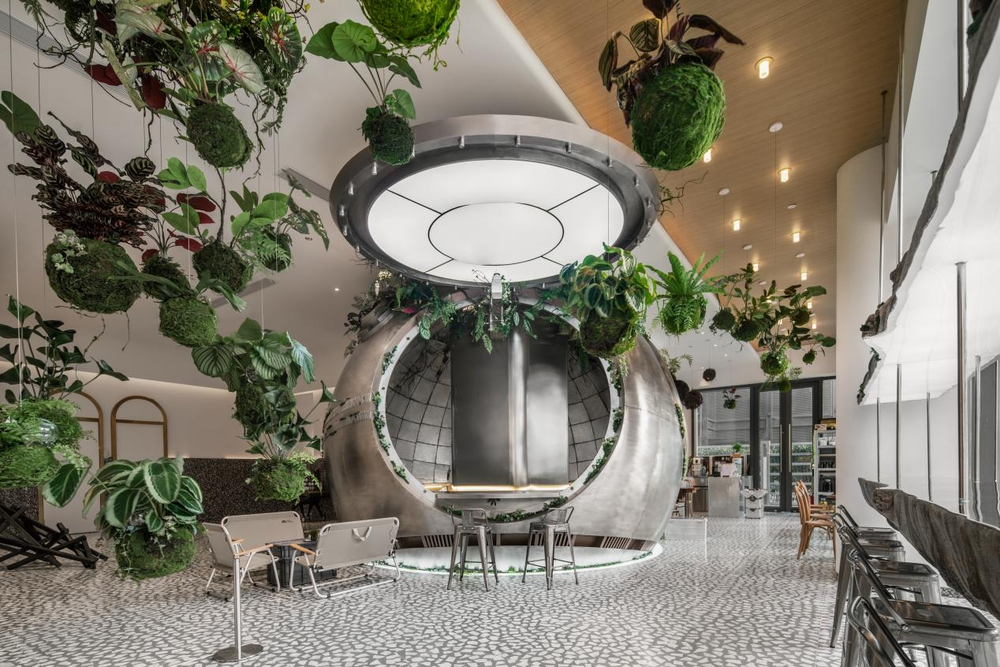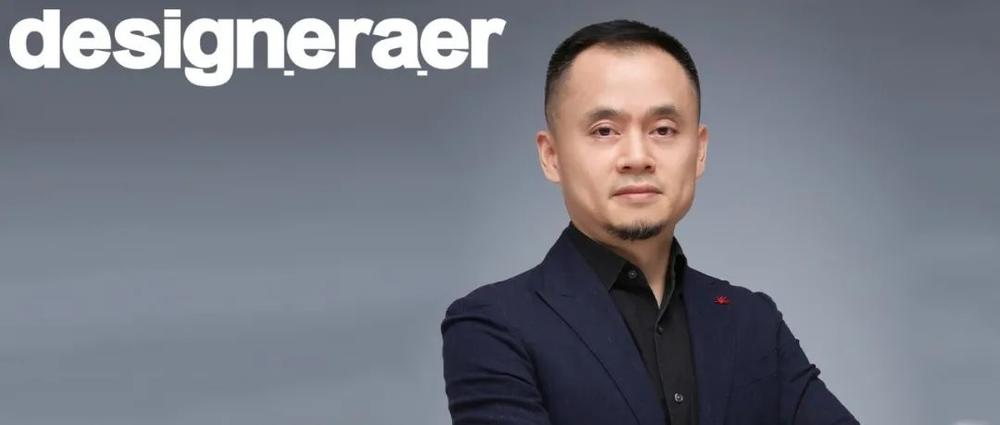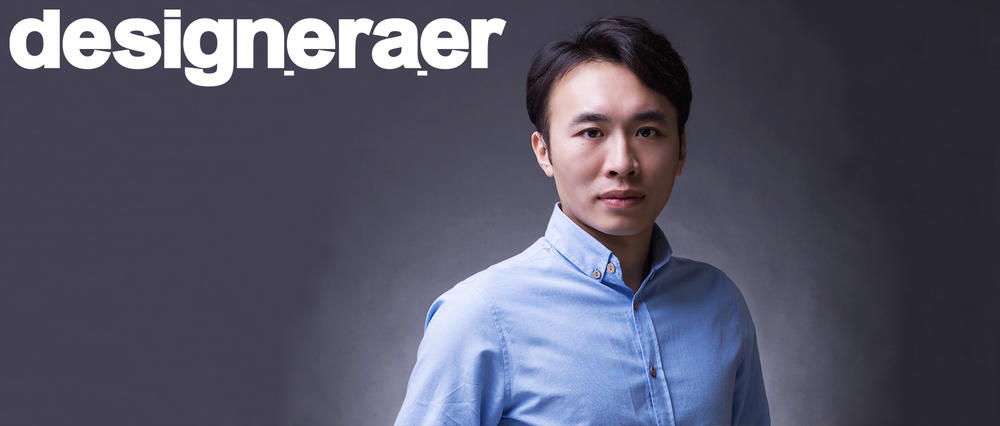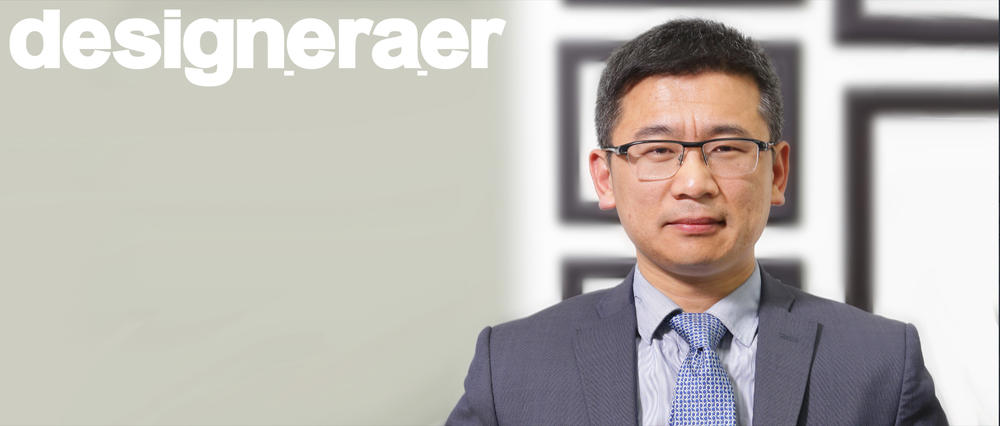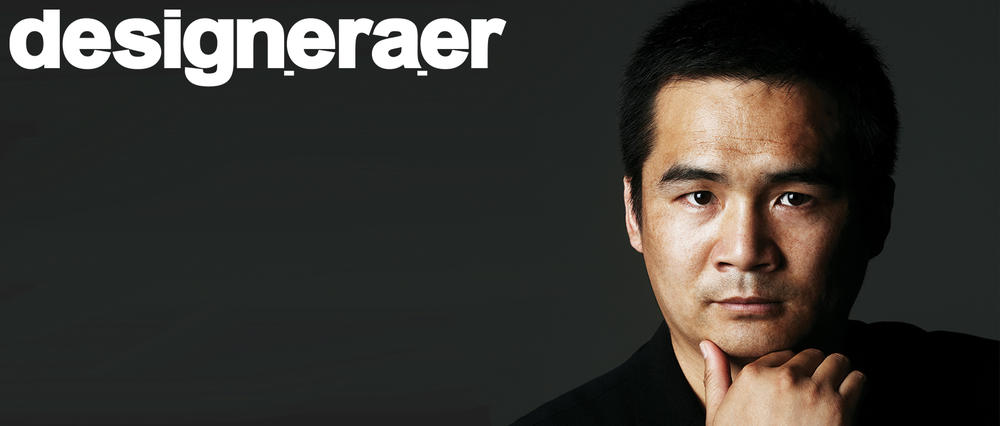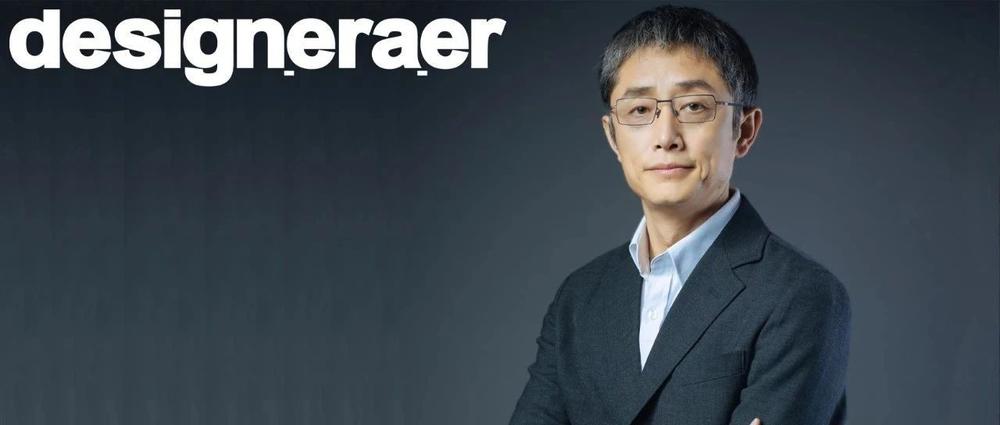博乐文
Ruben Bergambagt
叠术事务所的创始人和合伙人之一。 他毕业于荷兰特尔夫大学获建筑硕士顶级学位(2009), 并选为2009年的最佳毕业生。 他于2008年在东京工业大学继续深造并参与青年科学家研究项目。 博乐文是ARB(英国)和SBA(荷兰)注册建筑师。
博乐文曾在多家知名建筑事务所工作,包括:北京waa事务所(合伙人,2012-2015)、伦敦福斯特事务所(建筑师,2009-2012)、东京Rogers Stirk + Harbour事务所(2008)和鹿特丹24H事务所(2005-2008)。博乐文曾深度参与到2018年斯特林奖的获奖项目——Bloomberg总部大楼,和银川当代美术馆项目的设计当中。他的设计思想来源于他踏足过的5个大洲和50多个国家。博乐文是一个乐观者和批判思考者,他深信建筑造型的力量,并追求可持续的建筑人居环境。
博德朗
Ben de Lange
叠术事务所的主创之一。毕业于著名的荷兰特尔夫大学,获建筑硕士高等级(2010)。他的毕业作品被列为Border Condition Studio 学期最佳作品。2007年于荷兰蒂尔堡学士获得建筑和工程毕业。
2011年起博德朗于北京思邦担任项目建筑师,参与多个大型商业、非商业和景观项目。过去6年的国内工作中,他丰富的设计和施工经验包括与中国大型和有影响力的业主、地产商和中国政府部门的合作。曾在两所荷兰建筑事务所和在中国的经验,博德朗参与过的已建成的项目超过10个其中合作方包括万科、万达,以及泰禾。
01
时机时机:请介绍一下叠术建筑事务所和自己。
Could you please give us an introduction of Superimpose and yourselves?
Ruben:我是Ruben,是叠术建筑事务所的创始合伙人之一。
I am Ruben, a founding partner of Superimpose Architecture.
Ben:我是Ben,也是叠术建筑事务所的创始合伙人,还有我们的第三位合伙人Carolyn,不过很遗憾今天她不能来接受采访。
I am Ben, also a founding partner of Superimpose Architecture together with Carolyn, our third partner, who unfortunately could not be here today.
Superimpose (叠加) 的意思是将不同层次的信息叠放在一起,并使每一个层次保持清晰明确。这是我们的设计理念,“使一物与另一物占有相同的位置并与之共存。”
‘Superimpose’ means to place layers on top of each other, in such a way that all layers are still evident. This is our design philosophy.
Superimpose (叠加) 也反映在我们的团队框架中,我们希望拥有一个多元化的团队,并与其他团队合作,而不仅仅是与设计师。我们也把自己看作是客户的合作者,而不仅仅是为他们工作。
‘Superimpose’ is also reflected in our team structure. We like to have a diverse team and collaborate with other institutes, not just with designers. We also see ourselves as a collaborator with the client, instead of just working for them.
Ruben:是的,我相信合作是非常重要的。Ben提到了客户,但我们也与摄影师、艺术家和其他多媒体艺术家合作。从我们的项目中就能看到,我们总是让不同领域的人参与进来以便获得最佳设计成果。另一件非常重要的事情是场地文脉意识,当我们设计一个项目的时,不仅从客户的角度思考,同时也尝试从场地中寻找可以利用的灵感。正是这些层次叠加在一起才创造了更多的价值,这是我们作为建筑师的目标,即为客户和用户创造附加价值。
Yes. I believe collaboration is very important. Ben mentioned clients, but we also collaborate with photographers, artists, and other multimedia artists. If you look at our projects, we always involve different parties to really get the best out of the design. Another thing that is really important is contextual awareness. When we design a building, we do not only look at it from the perspective of the client, we look beyond the site and what can we use as inspirations. It is all these layers added on top of each other which create more value. That is our goal as architects, to create extra value for the client as well as the users.
Ben:就我个人而言,我曾在其他事务所工作过,那段时间很开心,也学到了很多。但同时,我也逐渐建立了自己的想法,如果我是老板我会怎么做。对我来说,创业并不是一个时间点,我开始做自己的工作室也不是因为讨厌以前的工作和事情,而是因为我认为这是一个让我真正了解设计的机会。
Personally, I have worked in other studios and had a lot of fun working with each other, learned a lot. But at the same time, I also developed my own thoughts about how I would do things if I were the boss. For me, it was also not a moment. I did not start my studio because I hated what I did before but because I thought this was the chance for me to really understand design myself.
Ruben:我们甚至不知道什么时候开始的,反正说做就开始做了。跌爬滚打的经历着,顺其自然就开始了。当然有过很多障碍,也曾非常艰难,但同时也很快乐。不要强迫事情发生,我认为如果你有足够开放包容的想法,保持开放的心态,生活会把你带到特定的方向。
We did not even know when we started, we just went for it. Jumped into the deep end and it just happened. There were a lot of obstacles and it was very tough but it was a lot of fun as well. Don't force things to happen, I think life will take you in certain directions if you are open minded enough. Just be open minded.
Ben:我想我们三个都想自己做些事情,想要探索属于自己的设计风格和设计方法,所以创立叠术建筑事务所给了我们机会。
I think all three of us wanted to do something for ourselves for quite a while. We wanted to explore our own design style and our own design methodology, so starting Superimpose really gave us an opportunity to do this.
02
时机时机:能否通过几个项目陈述一下叠术建筑的设计理念?
Could you please demonstrate your Superimpose design philosophies through some projects?
Ben:我们比较知名的项目之一是山谷里的大白屋,这是一个位于杭州附近山谷里的小型教育营地。这个项目位于一个非常敏感的场地,其本身是一个美丽而原始的山谷,有稻田和森林。这个地方很有趣,但也很脆弱,我们想保留山谷的脆弱感,与此同时创造一个有趣的中心点,所以我们决定在山谷里建造一个漂浮的白环。这个圆环稍微抬高了一些,这样看起来就像是景观在建筑下面。我们对场地环境进行了大量的思考,同时也想达成一种对比,看看如何将自然以嵌入的方式与建筑相连接,同时也突出景观自身。这是我们每个项目都在尝试的,我们观察场地中有什么文脉,然后找到方法让建筑介入进去。
I think one of our better-known projects is Micr-O, which is a small education camp in a valley close to Hangzhou. This project was located on a very sensitive site. The site itself is a nice and pristine valley with rice paddies and trees. The location is very interesting but very delicate, so we wanted to preserve and somehow keep the delicate feeling of this valley. At the same time, we wanted to do something that was quite interesting in order to create a center point. So, we decided to create a floating white ring in this valley. The ring is slightly elevated so that the landscape seems as if it was going underneath the building. We worked with the context a lot but at the same time we wanted to look for contrast and see how to connect a building in such a way that it feels embedded. But at the same time, It stands out. This is something we always attempt with every project, we look at what is there, the context, and then find a way to insert our architecture.
▲ Micr-O © 叠术建筑事务所
Ruben:是的,这个项目是真正关注到建筑是如何与景观相协同但不相对抗的。另一个例子是长治博览中心,一个工厂改造项目。这是我们在山西长治合作的第一个客户,他有15到17个坐落在市中心的待改造的旧工厂。客户在开发阶段承受了很大的压力,因为住宅可以转化更大的利益,所以他们决定做房地产。然而,那些工厂真的很赞,我们场地调研时,目光无法离开这些美丽的建筑。客户要求我们把它们都拆了,这样他们就可以重新开发土地,尽可能多地创造营收。最后,我们说服客户分阶段工作,保留一些工厂,改造成文化中心,变成一个人们可以去的中心地,在那里人们会找到归属感,给予和创造附加价值,而其余的土地可以开发成住宅楼。这两个项目同时进行,目前住宅楼也刚刚完工。
Yes, that is interesting because it is really focusing on how the building works together with the landscape and how they do not work against each other. Another example is the Re-veil project, a factory transformation. This was our first client who was developing in Changzhi, Shanxi province. They had a lot of land with fifteen to seventeen bearing factories; beautiful, old factories located in the heart of the city. Our client was under a lot of pressure to develop the land and because residential was more profitable, to make real estate. However, these factories were amazing. We were walking around the site and noting these beautiful structures. The client asked us to take them all down so that they could redevelop the land and make as much profit as possible. In the end, we convinced the client to work in stages since there was so much land to develop. Keep some factories and transform them into a cultural center; into a hub where people can go where people feel attached to, give and create extra value. The rest of the lands could be developed into residential towers. We started working on both projects and the residential towers have just been completed.
▲ 长治博览中心 © 叠术建筑事务所
Ben:我想当我们的一些客户开始与我们合作时,他们也会理解和欣赏这一点。我们挑战任务书的设计可能会失败,但我们总想看看我们能否推动建筑的可持续发展,比如Ruben刚才提到的,我们能否推动一项文化遗产的保存,这对我们来说非常重要。
I think some of our clients also understand and appreciate this aspect when they start working with us. We challenge the brief and we might fail but we always want to give it a shot to see whether we can push a sustainable agenda, for instance, or what Ruben just mentioned, whether we can push for keeping a cultural heritage. This is super important to us.
▲ 长治博览中心 © 叠术建筑事务所
Ruben:是的,因为在中国政府是非常重要的。如果你能说服客户“政府可能会对保留城市工业遗产感兴趣”,这可能是推销你设计方案的一种方式。这样的推销策略对这个项目以及我们参与的另一个项目都很有帮助,政府意识到了设计的价值,因为它帮助创建了一个城市标志。此外,开发商也很喜欢这个项目,因为他们可以把它卖给政府,这样大家共赢。这就是我们的战略:我们关注政府在关注什么,以及我们如何与之合作。
Yes, because in China, the government is very important. If you can convince the client that the government might be really interested in keeping an industrial heritage of the city, it could be a way to sell a design proposal. Such a sales-pitch really helped with the project as well as another project we worked on, where the government recognized the value of the design as it helped create an identity for the city. In addition, developers also appreciate the architecture since they can sell it to the government so everybody wins. That is the strategy for us; we also look at what the government is looking for and how can we work along with that.
Ben:与此同时,我们为客户提高了房产价值。
At the same time, we increased the value of the property for the client.
社区的反馈非常好,客户告诉我们他们很高兴。政府也非常高兴,也租用了部分工厂。我不知道他们是怎么赚钱的,但他们租下了两部分空间,这表明他们真的很喜欢它,该项目成为该市文化遗产再开发的一个先例。
The community feedback was very good and the client tells us they are very happy. The government was also very happy and even started renting part of the factories. I am not sure how they did it financially, but they took two parts of the space which showed that they really like it. The project became a precedent for the redevelopment of cultural heritage in the city.
03
时机时机: 在实践中,有没有发现任何中国特有的文脉特征?
Do you find any Chinese specific contextual features through your practice?
Ruben:我认为可能是缺少文脉关系吧,有时我们去场地,让我们在一大片的土地寻找灵感。在欧洲,建筑师关注周围环境,关注与周围环境邻近的元素,但在中国关注的是更大的范围,一公里外可能有一条河,这可能是灵感来源,也可能是住在那里的人,或者可能是想利用这个空间的人。我们必须以不同的方式看待它,每个城市,每个地方在这个层面上都是不同的,有时缺少的文脉关系会让我们有不同的思考方式。
I think sometimes it is a lack of context. Sometimes we go to the site and there is a massive piece of land and we look for inspirations that can be found. In Europe, architects look at the surrounding, at elements close to the surrounding, but in China, we look towards a bigger scale. There might be a river a kilometer away which could be the inspiration or the people who live there or want to use the space. We have to look at it a different way, every city, every place is different in that sense and sometimes the lack of context makes us think differently.
▲ 柬埔寨金边 续之湾 © 叠术建筑事务所
Ben:与此同时,我仍然认为有很多物质和很多领域是可以再开发的,即使中国发展得非常快,它们仍然处于社会结构中。尽管这些建筑看起来可能不是最好的,但它仍然值得一看,去寻找有什么是可以被保留的。这让我们以不同的方式思考现有的环境。
At the same time, I still think there is quite a lot of substances and a lot of areas that could be regenerated, even if they developed very quickly, still they locate a social structure. Even though the buildings might not look the nicest, it still might be worth looking at what is there and what could be kept. It invited us to think differently about the existing context.
Ruben:我们开始改变我们的工作方式,着眼于我们能做什么,而不是“我们能看到什么?留下什么?还能补充些什么?”与此同时,我们需要成长,需要展望未来,我们不想设计一系列只把人放进去而没有其他任何意义的住宅楼。我们如何给项目赋予意义?如何在项目中创建一个社区?如何创造一个让人们为在这儿生活、工作停留而感到兴奋的空间?如何为用户创建身份认同?
We start to change the way we work and look towards what we can do rather than what we can look at. ‘What can we keep?’, ‘what can we do?’, and ‘what can we add to it?’. At same time we need to grow, we need to look at the future. We did not want to design a series of residential towers with people placed inside each tower without any meaning. How do we introduce meaning to a project? How do we create a community within a project? How do we create a place which is exciting for people to live, to work, and to be a part of? How do we create an identity for someone?
▲ Y-Loft City © 叠术建筑事务所
Y-Loft City是一个住宅项目,与我们在中国看到的住宅项目完全不同。我们把大多数住宅楼称为“千篇一律的公寓”,一个被复制了500次的设计。我们避免设计通用的建筑,居住在相同的空间并没有给予用户想要的身份感。Y-Loft City这个项目是两座旋转的方塔,为什么只有南向的空间进行日照,而北面却没有阳光照射?为什么我们不把建筑旋转一点,让每个立面都可以有一点阳光,所以我们设计了户外阳台。虽然该设计已得到政府批准,但承包商仍却犹豫不决,因为他不能确定这样是否可行,他可能因此得不到报酬。尽管如此,我们还是坚持建成了它。最后,这个项目很快就卖光了,价格比周围的开发项目都要高。它吸引了很多80后年轻人,因为他们厌倦了同样的空间,他们想要一个与众不同的空间,所以他们觉得自己与这个项目匹配。为什么我们称它为Y-Loft City,因为它是有经济能力并且年轻的80后的聚集地。从这个意义上说,我们从历史上寻找可以被保留的元素,如果没有,我们就去思考未来可以添加的特质。
The Y-Loft City, a residential development, is a completely different development than what we are used to seeing in China. We call most residential building ‘cookie cutter flats’ where one design is copied 500 times. We wanted to avoid generic architecture. It is always the same and is not what people want as part of their identity. The Y-Loft City is two square towers rotated. Why would you create only south facing for sun exposure, but on the north, there's no sun exposure? Why don't we rotate the buildings a little bit with every facade receiving sun exposure. We created outdoor balconies. However, although the design had been approved by the government, the contractor was hesitant since he could not be sure that project would work and he might not be paid. He was worried, everyone was worried. Despite all that, we went ahead and built it. In the end, the project sold out very quickly with a higher price than surrounding developments. It attracted a lot of post eighties young people who were tired of the same, the same, the same. They want to have an identity, they want a balcony; so they felt a connection to this development. This is why we called it Y-Loft City, because it became a post eighties development for a young new generation who had already started earning money for a few years. In that sense, we look at the past for elements that can be kept but if there is nothing, we look towards the future for what we can add. ▲ Y-Loft City © 叠术建筑事务所
04
时机时机:近年来建筑环境和社区最重要的价值是什么?
What is the most important value in recent built environment and communities?
Ruben:我们生活在快速消费,快速赚钱的社会,开发商会很快抽身并进入到另一个项目。我们需要避免这种只关注销售额的概念,我们应该开始关注质量。开发商想赚钱没有问题,但他们也可以通过关注开发项目中的社区价值来赚钱,为居民创造并提供比简单公寓更多的价值。我认为我们需要开始为每一个开发项目增加更多层次,使其成为一个宜居的社区。
We live in a society where it is about quick selling, sell sell sell, make quick money, developers quickly step out and focus on another project. We need to avoid this concept which only focuses on selling and start to focus on quality as well. The developers want to make money, fine, they can make money. But they can also make money by looking at the community value of a development, to create and give something more to the residents than a small apartment. I think we need to start adding more layers to every development to make a livable community.
Ben:“包容”,每个项目都应该努力把所有这些都包括进来,而不是只考虑一个目标群体。真正的目标群体应该是整个社区,这是我们在每个项目都关注的。公共空间始终是项目中的要素,怎样才能创造一个对所有人都包容并让人自然互动的空间呢? 当然我们经常受限于客户的任务书,但在这些被提出的条件中,我们需要尝试引入“包容性”这一概念。
Yes, ‘inclusiveness’. The project should try to focus on including all these, instead of having only one target group. The target group should be the entire community, which I think is what we look at in every single project. Public space is always a main essence of a project. How can we create a space that includes people and invites people to interact? We are very often limited by the client's brief, obviously, but within the parameters that has been set up we need to try and include this concept of inclusiveness.
▲ Y-Loft City © 叠术建筑事务所
这也是我们在Y-Loft City中一直强调的,Y-Loft City是城市中第一个非封闭式的住宅社区,其中一层完全对外开放,这意味着我们试图将项目与其周围场地连接起来。这里有文化中心、学校和医院,还有一个中心广场,也可以变成一个集市。我们试图让项目尽可能开放,让人们走进来,成为新社区的一部分。我们试图不创造孤岛,而是创造一片完整的城市肌理。
This is also what we have been doing with Y-Loft City, which is the first non-gated residential community in the city where the ground floor is completely open to the outside. This meant that we were trying to connect the project to its surrounding site. Since there is a cultural hub, schools, and a hospital, we really tried to make this project as open as possible for people to walk in and be a part of this new community. It also has a central square which can be a marketplace. We tried to not create islands but instead, to create an integrated urban fabric.
Ruben:我们项目的终极目标: 要灵动并具有战略性。这是另一个我们认为作为一家公司能够脱颖而出的理念,叠术建筑设计与众不同的是我们以策略先行,这非常重要。
That is the goal in our projects; to be smart and to think about strategies. It is another thing which we think we can, as a company, distinguish ourselves. How we distinguish Superimpose is we really work with strategies, super important.
▲ 天空之城 © 叠术建筑事务所
我们即将竣工杭州“天空之城”大型办公项目。该项目由万科开发,SOM设计100万平方米的总体规划,我们设计80000平方米连接地铁出入口的办公建筑。这是一个TOD项目,地铁就在场地前面。地铁地下空间很暗,寻找出口的时候很难,我们需要改变这个情况。政府是地铁和项目的投资者之一,非常重要的一点就是出入口的设计要非常好,并与所有办公楼都有很好的连接关系。我们决定将场地前的绿色走廊部分推入地下,这是一个属于政府的公园,这样在地铁的出入口和地下一层创造了自然环境,有光照,有绿色植物,办公大楼也清晰可见。这是我们在项目投标阶段设计的策略,也成为我们被选中的原因。随着时间的推移,情况发生了变化,我们需要进行商议,但我们地铁出入口这个概念得以保留,这对于抵达空间、建筑、办公室以及整个发展都是非常重要的。
We are close to completing a very big office development called Sky City in Hangzhou. It is a project by the developer, Vanke, with a master plan of a million square meters designed by SOM. We are designing 80,000 square meters of office development with subway entrances and exits. It is a TOD project and the subway is in front of the site. If you arrive by subway, you are underground, it is dark, you do not know where to go, and you are looking for an exit. We thought it could be better. The government is one of the investors of the subway and the plot. It is very important that the arrival situation works really well and is very well connected with all the offices, which we are designing. We decided that the green corridor in front of the site, where there is a park owned by the government, could be partially pushed into the ground. This created a natural environment at the arrival and basement level of the subway with daylight coming in, greenery, and clear visibility towards the office buildings. This was a strategy we used at the very beginning of this project during the tender stage and was how we got selected. Over time, circumstances changed and we needed to negotiate, but we still have this concept at the subway arrival. It has always been very important for the arrival of the space, of the architecture, of the offices, and the whole development.
Ben:设计大纲及其条件,加上我们认为好的解决方案决定了一个设计的外观。我们并没有寻找特别的设计风格,我们的设计风格可以描述为简洁,因为它关注的是解决方案,而不仅是在社交平台上看起来炫酷的照片。
We think that the brief together with its parameters and what we think is a good solution should dictate how a design looks like. We are not looking for a very particular design style. Our design style could be described as very simple because it focuses on the solution. It is not focused on making us look great on social media.
我们希望人们是因为我们的设计解决了某些问题来记住我们工作室,他们会说,这个项目一定是叠术建筑事务所的作品,因为它是如此简单干净,而且很好地解决了一个问题。如果将我们的设计风格进行归类,那应是简单的,以解决问题为根基的设计风格。
What we would like to achieve is that people recognize our projects through their simplicity which solves a problem elegantly. They would say that project must be by Superimpose because it is so simple, so clean, and it solved a problem very well. If you were to place our design style in a certain category it would be simple, solution-based.
▲ SOHO 3Q共享空间 © 叠术建筑事务所
05
时机时机:随着技术的发展和互动行为方式的改变,对城市环境中的公共空间有何反思?
With the development of general technology and the change of the way of social interaction, what do you rethink about public space in urban environment?
Ben:作为设计工作室来说,我们坚信一切都需要平衡,也包括媒介的使用。你可以使用,但不应该使用过度,因为人们可能会与现实脱节。我们的项目是关于环境体验的,关注与自然,周围人,以及现实生活中其他人的联系。Where we stand as an office is that everything needs to be balanced which also includes the integration of media. You can do it. But you shouldn't be doing too much at the same time, because people might lose connection with reality. Our projects are also about experiencing context, about a connection with nature, connection with your surroundings, and actually connecting with other people in real life.
这就是我们工作室的立场,也是我们工作室的研究方向。That is where we find ourselves at the moment as an office. It is also a direction that we are looking into as an office.
Ruben:我们需要人,新冠疫情就是一个很好的例子。我们都与家人疏离,我等不及要回去见我的家人并拥抱他们。我们是人,是社会动物,我们需要彼此。
We need people. Covid-19 is a perfect example. We are all detached from our family; I cannot wait to go back to see my family and get some hugs. We are people, we are social animals and we need each other.
重要的是不要忘记我们来自哪里,我们是谁。从这个意义上说,我们并不担心人工智能会接管世界,因为作为人类,我们需要用我们的双脚站立,需要有归属的空间。
It is very important to not forget where we come from and who we are. In that sense, we are not worried that AI is going to take over the world because as humans we need to stand with both feet on the ground and have spaces to feel attached to.
建筑仍然应该向公众提供这些。Architecture should still offer this to the public.
Ben:我们之前在北京有一个项目叫CO贰装置,我们和一个视觉投影艺术家合作的临时展览。这个项目非常有趣,它在一个大部分时间被用作停车场的大院子里。里面有两棵树,但没有人注意到过,因为它们基本上都被汽车包围着。我们决定保留庭院的精髓,但让它缩小一点。与此同时,把树木解放出来,让它们成为庭院的中心点——也是设计的中心点。我们将庭院的规模缩小,这样它就与人的尺度相关,并影响人们不同的行为方式,比如安静下来。
One of the projects we had previously worked on is CO2 Pavilion, located in Beijing. It was a temporary exhibition where we collaborated with a visual projection artist. This project was very interesting because it was in a fairly large courtyard which was used as a parking space most of the time. There were two trees in the courtyard but no one ever noticed these trees because they were basically surrounded by cars. What we decided to do was to keep the essence of the courtyard but make it smaller. At the same time, free these trees which had been lost in a space filled with cars and allow the trees to become the center point of the courtyard – the center point of the design. We made the scale of the court small so that it relates to human scale and encourages people to behave differently; to be maybe quieter.
▲ CO贰装置 © 叠术建筑事务所
Ruben:我们把过道弄得很窄,如果你要经过某人,双方都得腾出空间。我们希望人们互相看对方,也许碰碰对方肩膀,进行一些互动。但与此同时,有些时候我们需要让空间有所不同,让人们的行为有所不同,比如用密集的、较小的空间,促使人们互相注视,或者引导他们关注地面的材料,这样人们会开始看到不同的东西。
We made the corridor so narrow that if you have to pass someone, both would have to make space. You invite people to look at each other, maybe touch each other's shoulders, have a bit of interaction. But at the same time, sometimes we need to make space a little bit different for people to behave differently, like with dense, smaller spaces which make people look at each other or pay attention to a paving so that they start to see different things.
Ben:这是一个庭院展览设计,我们认为这是一个很好的机会去表达,通过改变庭院的尺度,一切也会随之改变。焦点变了,人们的行为也变了。
This is an exhibition design of a piece of courtyard, so we thought this was a great opportunity to show people that by changing the scale of the courtyard, everything changes. The focal point changes and peoples’ behavior changes.
▲ CO贰装置 © 叠术建筑事务所
这个设计也体现了刚才讨论的关于虚拟现实与媒体的整合。晚上,巨大的白色装置会成为投影艺术家的屏幕,外壳是投影屏幕,影像无处不在,但走进内部会发现空间内几乎感受不到任何投射的影像。这是一种很好的平衡,我们试图让人们感受到两种不同的体验。
It also relates back to the integration of virtual reality and media. At night, the huge, white campus becomes a projection screen for with the projection artist. The outer shell is this projecting screen which has media everywhere. However, when you go inside, you still experience the space nearly free from this visual projection. It is quite a nice balance where we tried to position people at both sides.
06
时机时机:对建筑有什么看法?有什么可以和年轻一代分享的吗?What is your opinion on architecture and do you have anything to share with younger generation?
Ruben:建筑是关于人的,因为人在使用。这是我们正在寻找的东西,一旦你开始建设项目,当你不再在意你的需求,并在建成之后回去看看,你会体会到为什么你要当建筑师,为什么你可以感到满足。
Architecture is all about people because they use it. That is the thing we are looking for and once you start building projects, when you get out of your need, and visit them after they had been completed, you will see why you do this job and why you can be very happy with the results.
Ben:是的,我也这么认为,项目在那个时候便有了生命。我们做了一些其他的项目,但由于多种原因并没有按照我们想要的方式进行,可能是客户没有足够的资金完成特定的结果。这也没什么,但进行一个设计需要正确的设计策略,这就是为什么设计策略比建筑形式更重要。如果你有正确的设计策略,即便在施工过程中有一些偏差,但因为策略仍然存在于建筑方案中,所以其理念的影响仍然存在。我们之前设计了一所高中,虽然我们只参与了概念设计阶段,但因为我们的空间概念已经存在,学生们使用它的方式完全符合我们的预想。
Yes, I think so too. This project starts to live in a way. We also did some other projects which did not come out exactly the way we wanted to because of multiple reasons; perhaps the client did not have the budget for the design to be a certain way. That is fine, but to set up a design requires the right design strategy which is why design strategy is more important than visual output. If you have the right design strategy, the contractor can mess up a little bit during construction but because the strategy is still present in the building, the overall effect remains. We designed a high school in which we only worked during the concept design stage but because our concept of the space was there, students use it exactly the way we hoped they were going to use it.
▲ BACA艺术教育学院 © 叠术建筑事务所
那一刻你会因为自己是建筑师而感动。That moment is what makes you happy as an architect.
Ruben:建筑系的学生不应该只纸上谈兵,还应该去事务所工作,让自己的手“脏”起来。他们甚至可以去建筑工地工作,了解所有与建筑相关的流程。这是建筑最酷的地方,设计只是建筑很小的一个部分。建筑是关于技术知识、预算和对材料成本的资金控制等理解,建筑也与人相关。Students in universities should not only work on paper but also work at a firm to get their hands ‘dirty’. They could even work on a construction site and understand all the processes related to architecture. That is the cool thing about architecture; it is not just designing which is a very small part of architecture. It is about technical knowledge, budgets, and a financial understanding of material costs. It is also about people.
Ben:还需要和客户打交道。It is about dealing with clients.
Ruben:要善于交际,当个善于销售产品的推销员。建筑有很多层面的东西,它是一项非常复杂的工作,因为需要完成这么多层次的事情。
Dealing with a client is about being very social. It is about being a salesman selling a product. There are many, many layers, and it is a very complicated job because there are so many layers to deal with.
Ben:有热情,也有幸福的时刻。这个职业听起来可能很难,因为我们刚才也这么说。但我们却已经做了10年,15年,所以我们必须热爱这个职业。并且我认为它适合我们,很有创意,同时也很实用,所以你会受到来自两方面的挑战。这就是为什么我还出现在这里。
There is passion and moments of happiness. It might sound very hard and we are saying that it is a very difficult profession and so on but we have been doing it for ten, fifteen years so we must like it. I think it suits us. I like that it is very creative but very practical at the same time so you are challenged from both sides. That is why I am still here.
Ruben:这是一个多样化的职业,很有挑战性。但如果一切都平淡无奇,那生活得多无聊,是吧? 所以有时你必须经历一段低谷才能再次欣赏到事物的美丽。我真的很喜欢为做一件事情奋斗的感觉,也享受回顾自己小有成就的时刻。生活应该充满挑战,充满激情,并有所回报。
It is a diverse profession. It is challenging but life will be really boring if it is all flat, right? Sometimes you have to go through a little bit of a dip in order to see the beauty of something else again. I really like this feeling of struggling for things, but you also have moments that are pure beauty where you enjoy what you did. This is what we created. Life should be a challenging, exciting, and it should be rewarding.
Ben:不要太过安逸,保持警醒。
And do not get too comfortable. Stay critical.
Ruben:保持警醒。
Stay critical.
主编:田宁
采访人:Alex,der媒体部
统筹:田宁,Alex拍摄:der媒体部
视频:田宁
实录校对:Kelly,Alex,鲁宣传:der媒体部
